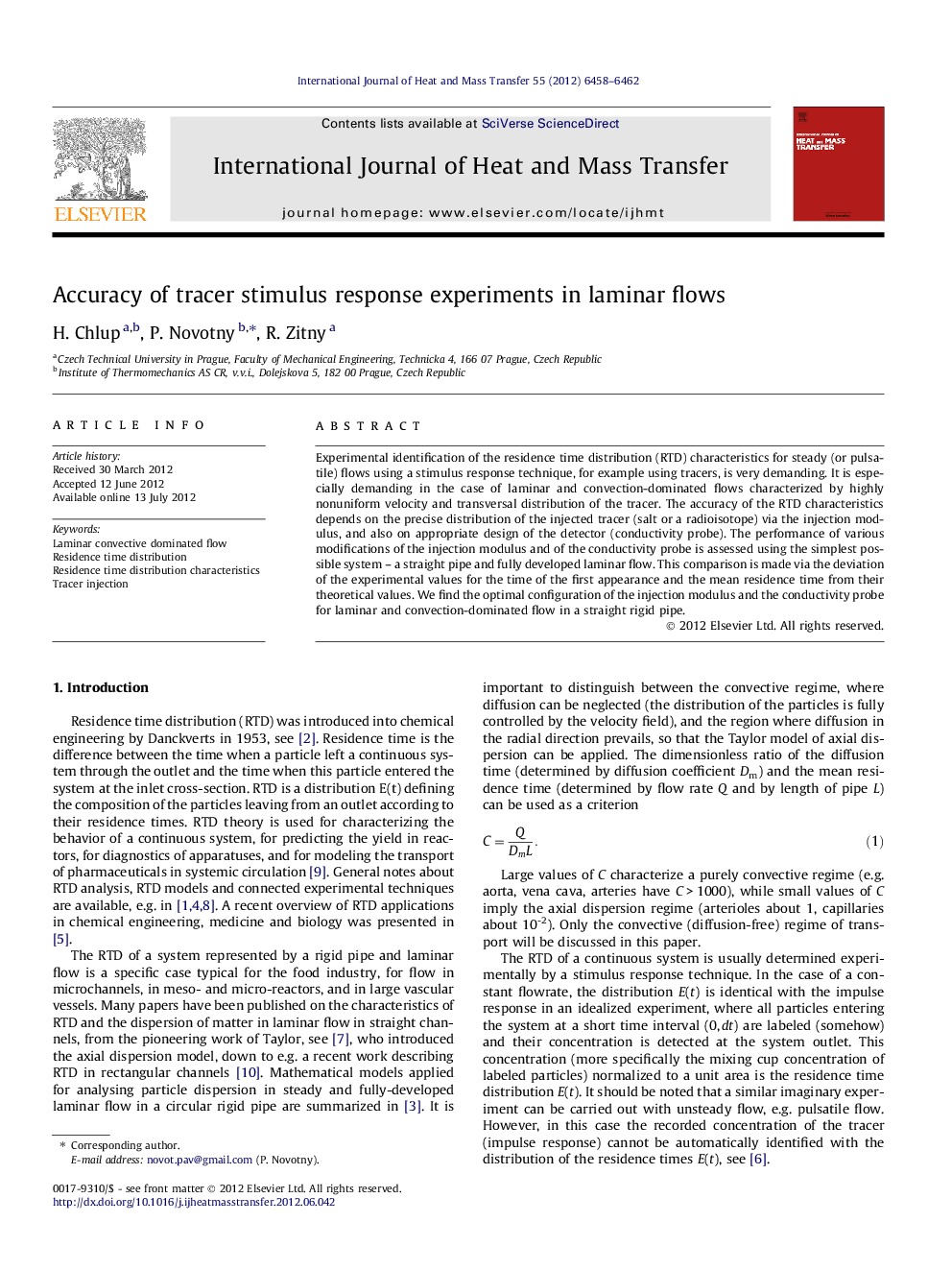| Article ID | Journal | Published Year | Pages | File Type |
|---|---|---|---|---|
| 658674 | International Journal of Heat and Mass Transfer | 2012 | 5 Pages |
Experimental identification of the residence time distribution (RTD) characteristics for steady (or pulsatile) flows using a stimulus response technique, for example using tracers, is very demanding. It is especially demanding in the case of laminar and convection-dominated flows characterized by highly nonuniform velocity and transversal distribution of the tracer. The accuracy of the RTD characteristics depends on the precise distribution of the injected tracer (salt or a radioisotope) via the injection modulus, and also on appropriate design of the detector (conductivity probe). The performance of various modifications of the injection modulus and of the conductivity probe is assessed using the simplest possible system – a straight pipe and fully developed laminar flow. This comparison is made via the deviation of the experimental values for the time of the first appearance and the mean residence time from their theoretical values. We find the optimal configuration of the injection modulus and the conductivity probe for laminar and convection-dominated flow in a straight rigid pipe.
